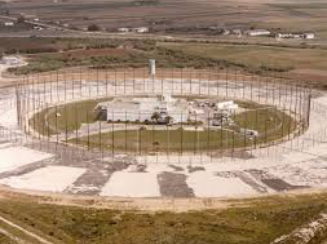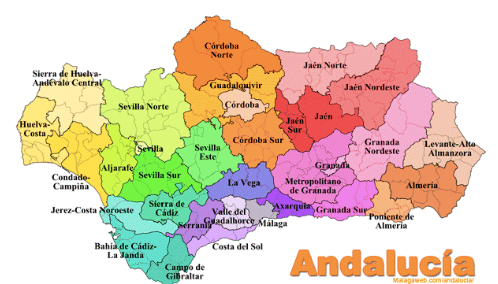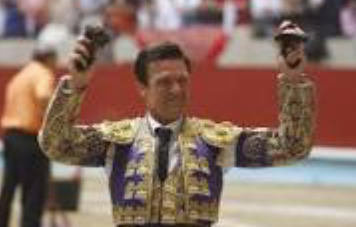Point Loma: The Bull Ring
Editor’s Note: We are spinning the Ukraine story like crazy around The Swamp. I am thoroughly sick of this already. Point Loma takes us on a trip to another time and a marvelous place. And for you junior Intelligence people, pay attention to the tradecraft tips on desk-top reconnaissance of the Boss’s desk when the leadership goes home in the evening. Given today’s state of relations between the Executive Branch and the Intelligence Community, the information may come in handy.
– Vic
The Bull Ring

There once was a day when intelligence was not politicized, at least not overtly like it is currently done, with every leak reported breathlessly by the MSM – fuck classification. It has become a tool of the blood sport of modern-day politics, which trashes its essential and critical importance – excuse me while I barf. Life in the Imperial City these days is a veritable bull fight, fittingly overseen by a Presidente…
Once upon a time in a land far, far away, where people built castles and other lasting monuments to legendary acts of courage and betrayal, pain and suffering, dreaming, there was a place which personified that wondrous, mysterious nation – the Fleet Ocean Surveillance Information Facility – Rota, Spain (aka FOSIF Rota) that did OPINTEL, and we did it right.
Spain at the time was, and is still a great country – it has it all. It was freaking awesome to be fortunate enough to be stationed there.

The Osborne Bull Silhouette
My friend Russ once described Spain and especially Andalucia as a cross between Texas and California, and he was spot on. The Osborne Bull stood as a sentinel on the mountain tops as you drove down the steppes to Sevilla, and then the coastal Autopista alongside the delta of the Rio Guadalqvir to Jerez de la Frontera, Cadiz, to Puerto de Santa Maria (the port from which Columbus – aka Cristobal Colon departed in 1492 to find the new world), past San Lucar de Barrameda, and then Rota.
Andalucia was the best. I even rented a house in Puerto from the Osborne family and in doing so, got free maid and yard service every week, and was invited to their Finca for paella cookouts on the weekends when I wasn’t on watch – great and gracious people. I still buy their booze.
My god, there were year-round fiestas, great food, bull fights, beautiful girls, the Sevillana, lots of Fino during Feria season, and reveling in the contrasts of the wondrous beauty and idiosyncrasies of the Spanish culture. It is the birthplace of unbelievable artists like Picasso, Miro, and Salvador Dali, and also despots like Franco and Torquemada, and his Inquisition (sort of what we see every day in our own imperial city). Look at the map – what a place to live? For those of us who were there, it is a mosaic permanently etched into our souls.

Andalucia – Need I Say More?
We itinerants in the military services tend to take on the personas of foreign places where we are stationed. We become an amalgamation of all those experiences – it makes us better, stronger in character, and now looking back, another reason I joined up although I didn’t realize it at the time. Maybe there’s a recruiting pitch in there, somewhere. How about “It’s not a job; it’s an adventure.” That worked for me. I damn sure wouldn’t have signed up to be part of a “Force for Global Good.” What the fuck did that mean, much less the message it sent to the bad guys?
Back to the Bull Ring. In the day, being a FOSIF Watch Officer (FWO) was the shit. But be careful what you want, because you will surely get it. Once you got onto the watch floor, you started to realize that it was a bull fight. You could get gored professionally in all sorts of different ways for the smallest mis-step; that you had better find a way to get past being a novillo, and become a true OPINTEL matador. You had to get over your fears, and cultivate that take-no-prisoners attitude, and develop a killer instinct. There were plenty of folks there who would gladly gore your ass, and accentuate your failures with smug smiles on their faces. Reasonable people would have tried to help you to ensure mission success, and not seek any personal gain at your expense, but not there. Sort of mind boggling, isn’t it?
Metaphorically, every day of the watch cycle rotation I put on my traje de luces, laced up my boots, donned my montera, and marched to the beat of a smart Pasodoblesplaying in my head on the long straight path through theWullenweber Arrayto enter the bull ring for battle. Makingthat trek, I underwent a mental transformation into a Torero, with my six-man cuadrillaof picadors, banderilleros, and a mozo de espadaawaiting my arrival. You had to have that sort of attitude to survive in that environment. After tossing the monterametaphorically into the bull ring (as we called it), we got to work – fight’s on. My idol and favorite bull-fighter then was Espartaco.

Juan Antonio Ruiz Román – Espartaco
Espartaco, as his names suggests, was spectacular. He knew how to play a bull, and the crowd. I first saw him engaged in battle in Puerto, and I was hooked. He had an uncanny understanding of a bull’s psyche, and used it to his advantage. He was at his most spectacular going for the kill. After a dizzying series of veronicas and olés from the adoring masses, he would turn his back on the still proud and dangerous beast; strutting away to find his mozo de espada(lad of the swords) to retrieve the muleta, and returning to deliver the coup de gras. He was masterful in the art of the kill; two ears and a tail.
At that time, he was just starting out in the Spanish bull-fighting minor leagues before being called up to the bigs in Madrid two years later. He enjoyed a 30-year career, over 1200 corridas, and finally retired after he had suffered a couple of bad gorings – it sucks getting old.
While in Rota, we Espartaco fans stayed attuned to where he was fighting and when, and I got to see him fight maybe two more times. He was unbelievable – I hunted down one of his promotional posters and bought it off a bar in Puerto, and now framed it hangs prominently in my living room. The man had incredible charisma and I still can feel it when I looking at the poster, and remembering the feeling of awe at the first of his fights I witnessed – he was that fucking good.
As a FWO, it felt like a daily, deadly duel with everyone. Anyone who called or sent us a message was suspect – you had to assume every situation was a set-up for failure. Successful FWOs did either of two things. One was to act oblivious, do the minimum, and get off watch and wait for the next guy to fuck it up. The other path was to be bold, take risks for being wrong, and also be prepared to accept the consequences if things went down the tube. Guess which path I followed?
I loved the mids, because there was no one around to fuck with you. Once assuming the watch, the FWO had to push out all of the daily reports (aka prods). My favorite part of the mid-watch was writing the 0100 (01). It was called the FWO’s message, and you were judged upon it. I won’s say any more about that but it was a rite of passage and really made the difference between being a good FWO, and a great one. My approach was to gather up all of the appropriate intel source reports around 2300, brew up a fresh pot of coffee, light up a Marlboro Red, and start finger-tip composing the story on the trusty Wang, which is still in my mind the best word processor, ever. It took several hours to analyze and compose the end product, and then send it to Streamliner. It was your chance to be creative and no one was looking over your shoulder, until the day ladies showed up to critique you – sanctimonious assholes who have had the benefit of getting time off, a good night’s sleep, and not having spent the past 12 hours on watch fueled by coffee, cigarettes, and adrenaline.
I never wanted to be one of those people. Being on the watch was akin to being a Torero- I spent four years on the Collection Management watch at EUCOM, followed by eight months as a Fleet Watch Officer at Rota. It got to be addictive – so my attitude was don’t fuck with me for something that you are unwilling to do. Yeah, I may have had a problem about that shit.
Nothing better than writing a great 01 – you old guys and gals out there who were at Rota back in the day know what I am talking about. It focused me like no other thing I’ve ever had to do, since the deadline for the 0500 was coming due at an alarming pace – you had to get it out before the morning watch took over. It was game on, and you had to be good because your future career and promotion prospects were at stake – I realized that after I had my ass handed to me for my first lackluster 01. It was the difference between retiring as a Captain vs. Commander. Pay attention, folks.
Fuck, I just realized that is exactly what I am doing right now, finishing this about 0330 EST (I started at around 2330). I am doing the same thing now more than 30 years later – OMG. Scary, I suppose; but a lot of my best work is arguably done late at night. Once a FWO, always a FWO I guess. Maybe I should change the name of this prod to the 01…
The real reason I started this was to work out the why of what I do and who I write these pieces for, outside of my personal circle of friends for wider consumption. It gets back to the bread and butter function of the FWO and that was the Spot Report. The main day-to-day function of the Rota FWO (and all other OSIS nodes around the world) was to take inputs from various sources on bad guy movements/actions, and issue spots to the deployed fleet units we were supporting in the Med and Red Sea – indications and warning (I&W). Spot reporting was a pretty regular event – I figure I wrote about 2000 of them, and it colored my writing style for a while until I got to the Naval War College, where I re-discovered prose. At the inception of my FWO-dom, I dutifully issued spots in accordance with our SOP. They were pretty generic:
FM: FOSIF ROTA
TO: SIXTHFLT
SUBJ: BAD GUYS UP TO NO GOOD
1. A BAD GUY SHIP DID THIS.
BT
Succinct I suppose, but not very sweet or satisfying. Imagine doing that for a 12-hour shift? It was bland and boring – the process needed some Adobo. After a few stints of this mindless parroting of raw-source data, I decided that I would make a change – and of course, I didn’t ask anyone for permission, I just did it. I added para 2 – how does it fit into what we know, and para 3 – what could be coming down the channel based on our (rich) historical databases.
Since I had been a bridge watchstander, CIC watch officer, and OOD of a carrier, I knew how irritating the single para messages were – so what? I decided to try to educate the operators, and it was a hit. It only took a little more effort to get it right, but the main thing was we were now doing analysis, providing context to the fleet, and building muscle memory on the part of our team on how to sustain the effort, and get better. In effect, telling a short story, or supporting a longer narrative.
I carried that idea forward to my other operational commands, and instilled it into all of the JOs who served under me. On Ma Midwayand Indy, I instructed our Strike Cell to “create a cliché a day” just to keep them juiced – it worked. It made them search for the proper words, find the correct nuances and phrasing, do the hard, critical analysis, and then convey it to the consumers in a way that they would understand, and even be entertained. The products we generated were not cut-and paste rip-offs. Equally important was that we were deemed to be credible and not spewing rambling diatribes with no contextual value.
I know that there are young NIPsters out there reading this and looking at us old guys for ideas, and who could benefit from our experience – this is a little tradecraft for your edification.
Being on watch was not always that serious. When it was slow on the last mid, the 01 was done, and while waiting for my team to compile the 0500 daily forecast for the fleet, we sometimes had free time on our hands – the Devil’s workshop; so then the mischief began.
Part of being a FWO was mastering the intricacies of the Navy’s communications systems – some of us got to be real experts. Today, they would call us hackers. We knew how to get into the system, modify the codes, create fake (news) reports that caused minor havoc, and then cover our tracks.
On the mids, we also used to conduct desk-top recce and snoop through the CO and XO’s in and out boxes to gather dirt. Anything on a message printer (ROP) was fair game. We figured out the passwords to almost all of the senior leadership and department head’s personal Wang files, and hacked through them, ruthlessly. Any good stuff was put into the FWO pass-down log (aka the PDL, might be a good topic for a future Socotra). Our CO, Big L, actually encouraged us – he famously said “if you’re not getting into my personals, then you ain’t trying.” We took him at his word, and got into all of them. Fuck, we’re spies after all, aren’t we? The operators don’t call us that no good reason. So act the part; be the ball, Danny.
We had a CO/XO read board for which we were duly required to scout out important messages, as well as adminastrivia and operational status reports, and post them properly in their various bins, accordingly. The read-board was in great demand early in the day, and all officers and chiefs were expected to read it at some point during their day shifts. Department Heads were required to initial it, and acknowledge their assigned actions from the CO/XO. Us wags would find the real stupid shit upper-level policy-related messages and post them along with a blank sheet for “comments” – something I learned early on when I was back in the squadron. I carried on that tradition there, since you could do it anonymously. Anyone could slip something onto the read-board without anyone knowing who did it – not so easy to do today in the digital age. Anything on the read-board then was taken as gospel. Caveat emptor.
Given any small opportunity, my signature tactic to prey on the gullibility of read-board junkies was to create fake messages, and see how deep we could sink the rusty fish hook into the mouths of the unprepossessing. The best one was when after Al Gray, the Marine Corps Commandant, had visited us to see our Marine Corps Detachment. Rota, at the time, was a joint intel operation before they became chic – besides Navy, we also had Air Force and Marines – the latter two were always wearing cammies to work because they were considered to be “forward deployed.” We used to snicker at that because, at the time, it was hard to distinguish between a Marine Corps officer and an Air Force enlisted data processor. Gray was famous for his off-the-cuff style of issuing ALMARs (stands for ALL MARINES) either praising or berating his troops, based on his impromptu visits – he made policy a lot of the time depending on his mood. No doubt he drove his staff crazy. His weekend visit to Rota was a big success – and I decided to strike since the proverbial iron was hot, and I was on the watch the next day.
I found an old ALMAR and super-copied it (go look that one up), studied his writing style, and then composed my own ALMAR. It basically lauded his visit to Rota, but expressed his concern that his Marines didn’t “stand out” since you couldn’t tell the difference between them and Air Force enlisted people. Heretofore, all Marines assigned to forward-deployed joint commands would be required to adhere to his new “Stand Out” policy by wearing Charlies (blue pants with blood red stripe, khaki shirts with ribbons) in lieu of cammies. We let it play out for three days before telling them it was pure BS. The best fakes are the ones that look and smell real. There’s even more shit we pulled on people that I can’t talk about. As the time-worn Naval Aviation adage says, “If you’re not having fun, then you aren’t doing it right.”
I’ll try to make these pieces more like spot reports when I can – something happened, some historical analysis, and then a lesson or two or four from the school of hard knocks on what it means for the future. Like Vic, I used to get to fly, and wound up getting A-6 B/N qualled – what a privilege my squadron mates and our superb leadership extended to me. But I first had to earn their trust because I was judged to be a no-shit, credible guy, with a high fun factor – I can’t emphasize enough how important that is.
Naval aviators say that every word in NATOPs manuals are written in blood; and the end result of bull fights in the corrida, the Bull Ring, the lazy afternoons ofSol y Sombraand lots of Fino– is blood in the sand – the tragedy of the bull. Just make damn sure that blood is not yours.
I’ll take an ear please; olé.
BT
Copyright 2019 Point Loma
www.vicsocotra.com
